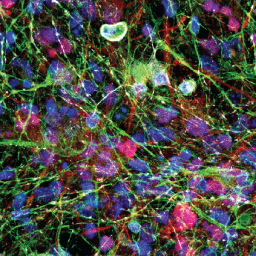Towards animal-free neurotoxicity screening: Applicability of hiPSC-derived neuronal models for in vitro seizure liability assessment
Main Article Content
Abstract
A sizeable proportion of drug attrition is due to drug-induced seizures. Currently available animal models frequently fail to predict human seizure liability. Therefore, there is a need for in vitro alternatives, preferably based on human-derived neurons, to circumvent interspecies translation. The increasing number of commercially available human induced pluripotent stem cell (hiPSC)-derived neuronal models holds great promise for replacing rodent primary cultures. We therefore tested three different hiPSC-derived neuronal models for their applicability for in vitro seizure liability assessment.
Using immunofluorescent staining and multi-well micro-electrode arrays, we show that all models develop functional neuronal networks that exhibit spontaneous activity and (network) bursting behavior. Development of activity patterns differed between the models, probably due to differences in model composition and seeding density. Neuronal activity and (network) bursting was reproducibly modulated with the seizurogenic compounds strychnine, picrotoxin (PTX) and 4-aminopyridine (4-AP). However, the sensitivity and degree of chemical-induced effects differed between the models, which can likely be explained by differences in seeding density, maturation and different ratios of inhibitory and excitatory cell types. Importantly, compared to rat primary cortical neurons, the hiPSC-derived neuronal models were equally, or even better in the case of 4-AP, suited to detect seizurogenicity. Overall, our data indicate that hiPSC-derived neuronal models may be used as a first screening tool for in vitro seizure liability assessment. However, before hiPSC-derived neuronal models can fully replace animal experiments, more compounds should be tested and the available models must be further characterized to fully understand their applicability.
Article Details
Articles are distributed under the terms of the Creative Commons Attribution 4.0 International license (http://creativecommons.org/licenses/by/4.0/), which permits unrestricted use, distribution and reproduction in any medium, provided the original work is appropriately cited (CC-BY). Copyright on any article in ALTEX is retained by the author(s).


